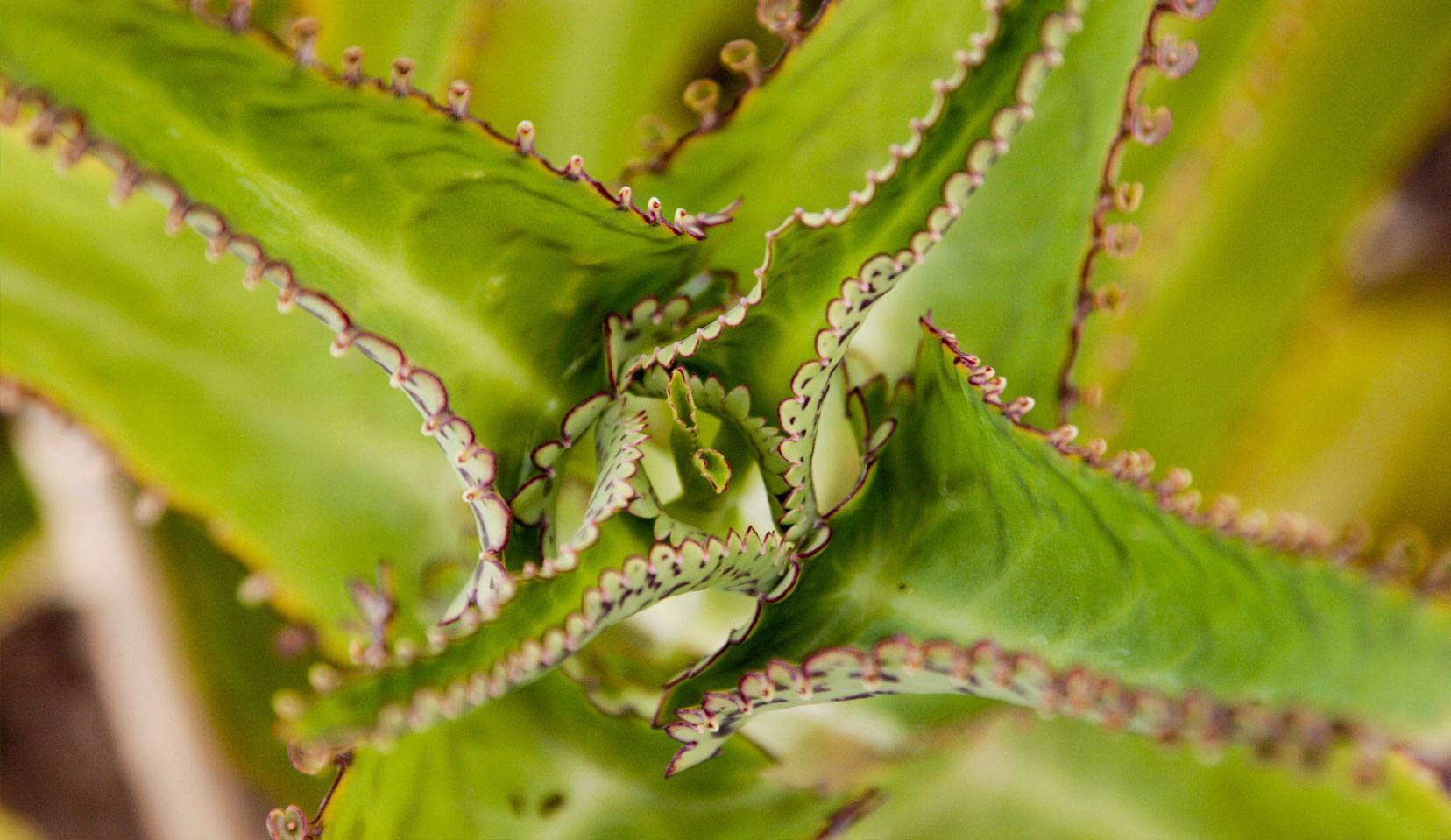Byrophyllum
Synonyms: Mother of Thousands, Devil's Backbone
Scientific Name: Kalanchoë daigremontiana
Family: Crassulaceae (Stonecrop Family)
Habitat
Tropical regions such as Calcutta and particularly the South African island of Madagascar
Constituents
Various plant acids such as isocitric acid, malic acid, free tartaric acid, bufadienolides, alkaloids, calcium oxalate, flavonoids, anthocyans, tannins
All Plants
![]()
Dr.Hauschka Plant Archive
- Almond Tree
- /
- Apple
- /
- Argan Tree
- /
- Arnica
- /
- Avocado
- /
- Birch
- /
- Bitter Orange
- /
- Blackthorn
- /
- Borage
- /
- Buckwheat
- /
- Butterbur
- /
- Byrophyllum
- /
- Cacao
- /
- Candelilla
- /
- Carnauba
- /
- Carrot
- /
- Cassava
- /
- Castor Oil Plant
- /
- Chicory
- /
- Coconut tree
- /
- Common Oat
- /
- Dog´s Mercury
- /
- Eyebright
- /
- German Chamomile
- /
- Ginger
- /
- Goldenrod
- /
- Greater Burdock
- /
- Hops
- /
- Horse Chestnut
- /
- Ice Plant
- /
- Jojoba
- /
- Kidney Vetch
- /
- Larch
- /
- Lavender
- /
- Lemon
- /
- Lemon Balm
- /
- Lemon Grass
- /
- Macadamia
- /
- Madonna Lily
- /
- Mango
- /
- Manuka
- /
- Marigold
- /
- Marsh mallow
- /
- Mastic tree
- /
- Mistletoe
- /
- Mustard
- /
- Myrrh
- /
- Nasturtium
- /
- Neem
- /
- Norway Spruce
- /
- Olive
- /
- Pale-purple coneflower
- /
- Peppermint
- /
- Pomegranate
- /
- Quince
- /
- Raspberry
- /
- Red Clover
- /
- Rhatany
- /
- Ribwort Plantain
- /
- Rose
- /
- Rosemary
- /
- Sage
- /
- Sandalwood
- /
- Sea Buckthorn
- /
- Sesame
- /
- Shea Tree
- /
- Small nettle
- /
- St. John's Wort
- /
- Sunflower
- /
- Tea
- /
- Tormentil
- /
- White Poppy
- /
- Wild Pansy (Heartsease)
- /
- Wild Strawberry
- /
- Witch Hazel
- /
- Wood Sorrel


